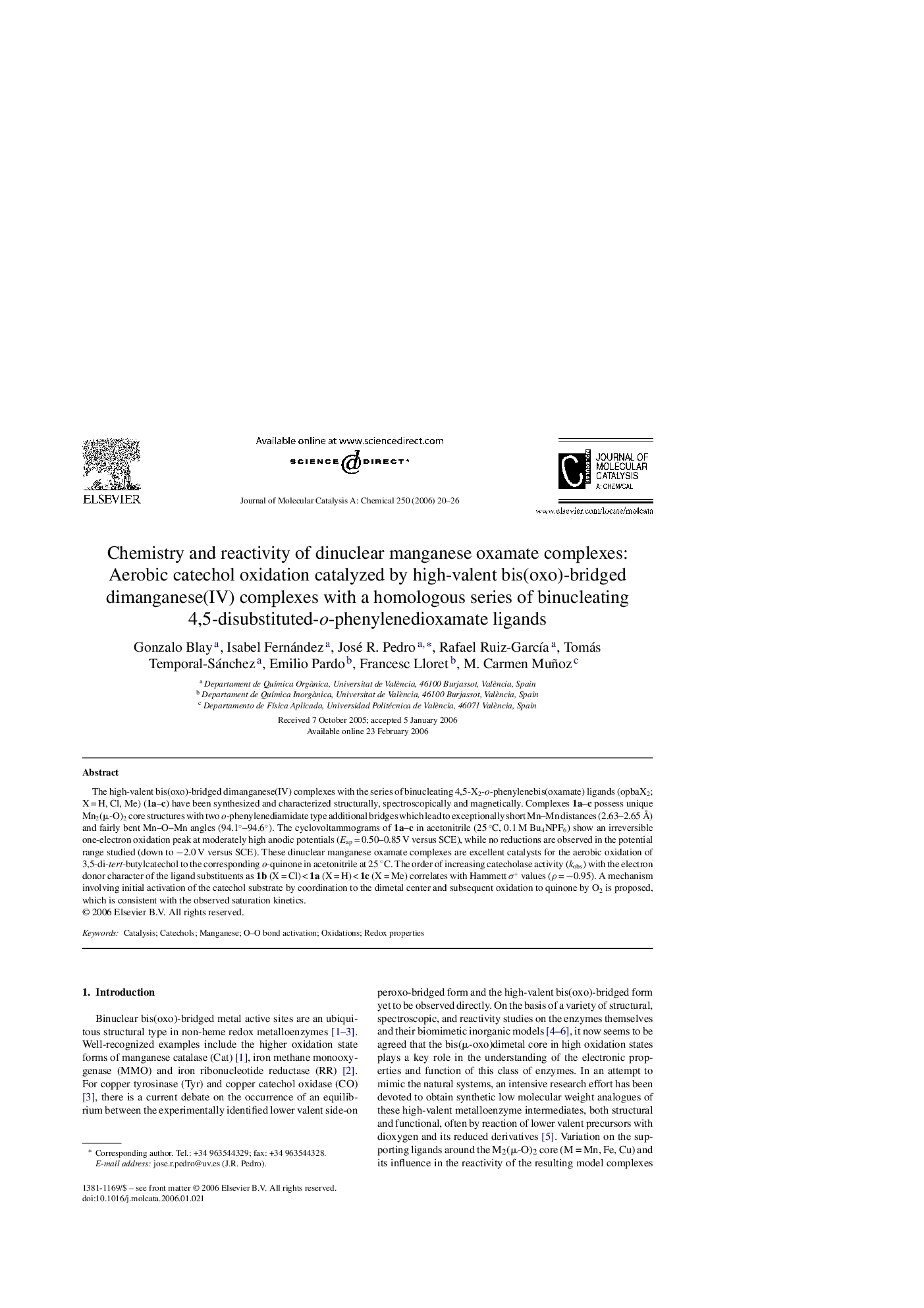| Article ID | Journal | Published Year | Pages | File Type |
|---|---|---|---|---|
| 68706 | Journal of Molecular Catalysis A: Chemical | 2006 | 7 Pages |
The high-valent bis(oxo)-bridged dimanganese(IV) complexes with the series of binucleating 4,5-X2-o-phenylenebis(oxamate) ligands (opbaX2; X = H, Cl, Me) (1a–c) have been synthesized and characterized structurally, spectroscopically and magnetically. Complexes 1a–c possess unique Mn2(μ-O)2 core structures with two o-phenylenediamidate type additional bridges which lead to exceptionally short Mn–Mn distances (2.63–2.65 Å) and fairly bent Mn–O–Mn angles (94.1°–94.6°). The cyclovoltammograms of 1a–c in acetonitrile (25 °C, 0.1 M Bu4NPF6) show an irreversible one-electron oxidation peak at moderately high anodic potentials (Eap = 0.50–0.85 V versus SCE), while no reductions are observed in the potential range studied (down to −2.0 V versus SCE). These dinuclear manganese oxamate complexes are excellent catalysts for the aerobic oxidation of 3,5-di-tert-butylcatechol to the corresponding o-quinone in acetonitrile at 25 °C. The order of increasing catecholase activity (kobs) with the electron donor character of the ligand substituents as 1b (X = Cl) < 1a (X = H) < 1c (X = Me) correlates with Hammett σ+ values (ρ = −0.95). A mechanism involving initial activation of the catechol substrate by coordination to the dimetal center and subsequent oxidation to quinone by O2 is proposed, which is consistent with the observed saturation kinetics.
Graphical abstractA novel series of high-valent bis(μ-oxo)dimanganese(IV) complexes with the binucleating 4,5-X2-o-phenylenebis(oxamate) ligands (X = H, Cl, Me) has been developed as efficient catechol oxidase models. A balanced ligand design allows to tune the catalytic activity along this series by varying the electronic nature of the X groups. Figure optionsDownload full-size imageDownload as PowerPoint slide
